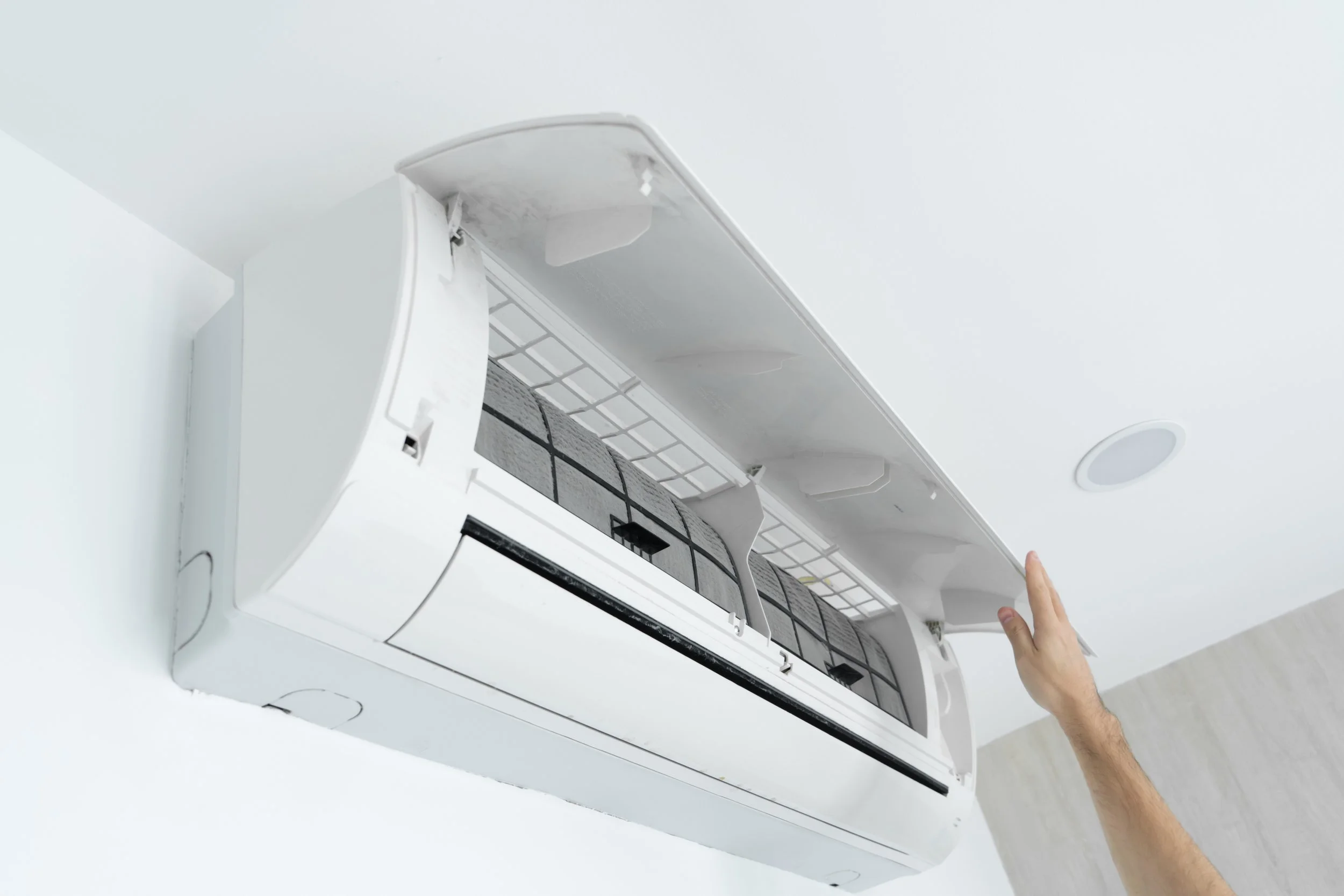Ductless Mini-Splits vs Ducted Heat Pumps Explained
Selecting the right HVAC system is essential for comfort in homes and businesses. Heat pumps come in two main types: ductless mini-splits and ducted systems. Understanding their differences can help homeowners, business owners, and property managers in Butte, Montana, make informed choices.
Ductless Mini-Split Heat Pump Explained
Ductless mini-split heat pumps, often called mini-splits, offer a practical solution for heating and cooling without requiring extensive ductwork. These systems are favored for their straightforward installation and energy efficiency, making them suitable for homes and businesses. The ductless system connects an indoor unit to an outdoor compressor via a small conduit that contains essential components like the power cable and refrigerant tubing. This setup efficiently transfers heat between indoor and outdoor spaces. A key feature of mini-splits is their inverter technology, which allows the compressor to adjust its speed based on demand. This results in precise temperature control and lower energy use. Without ductwork, mini-splits avoid the energy losses typical in traditional systems, where air can escape through leaks. They also offer zoning capabilities, letting you heat or cool different rooms independently. This enhances comfort by catering to individual preferences and saves energy by not conditioning unused spaces. Ductless mini-split heat pumps are a flexible and efficient choice for maintaining a comfortable indoor climate, especially when installing ducts is challenging or where specific areas need targeted temperature control.
Ducted Heat Pump System Explained
Ducted heat pump systems offer a centralized solution for heating and cooling by circulating air through a network of ducts. They're especially beneficial for properties with existing ductwork or larger spaces that need consistent temperature control. These systems work by transferring heat rather than creating it. The central indoor unit connects to a series of ducts, either pulling heat from outside to warm the interior during winter or expelling indoor heat to cool the space in summer. One advantage of ducted systems is their ability to maintain uniform temperatures across multiple rooms or zones, making them ideal for larger homes or commercial buildings. They can also integrate with existing HVAC setups, providing a smooth transition for those upgrading from older systems. However, installing ducted systems can be more involved, especially if the property lacks existing ducts. This leads to higher initial costs and longer installation times. For buildings with ductwork already in place, ducted heat pumps deliver an efficient, whole-building climate control solution, ensuring comfort throughout the property.
Choosing Ducted Heat Pumps vs. Ductless Heat Pumps
Selecting the right heat pump system ensures comfort and energy efficiency in your property. When choosing between ductless and ducted systems, consider several factors to find the best match for your specific situation: Current setup: If ductwork is already in place, a ducted heat pump might be the easiest and most cost-effective choice. It integrates smoothly with existing systems to provide consistent temperature control. Conversely, a ductless mini-split system offers a versatile alternative if your property lacks ductwork or if adding ducts isn't feasible due to space or budget constraints. Space: Ductless systems are perfect for smaller properties or individual rooms needing targeted climate control. They're instrumental in older buildings or extensions where installing ductwork is difficult. Budget: While ducted systems may involve higher initial installation costs, especially if new ductwork is required, they can be more economical in larger buildings over time. Ductless systems, with their generally lower installation costs and energy-saving features, can be financially advantageous in the long run, especially for smaller spaces or zoned heating and cooling. Energy efficiency: Ductless mini-splits often boast higher efficiency ratings due to their inverter technology and lack of ductwork, which can lead to energy losses. If reducing energy consumption and lowering utility bills is a priority, a ductless system may be the better choice.
Enjoy Year-Round Comfort with the Perfect HVAC Solution
Ultimately, the best heat pump system depends on your property's unique needs and characteristics. Consulting with HVAC professionals, like those at Lockmer Sheet Metal, can provide valuable insights and recommendations tailored to your situation. Understanding the differences between ductless mini-splits and ducted heat pumps is crucial for making informed decisions about your HVAC needs. For expert advice and professional HVAC services, contact Lockmer Sheet Metal. Our team is ready to assist you in selecting and installing the perfect heat pump solution for your property. Contact us to get started today.

